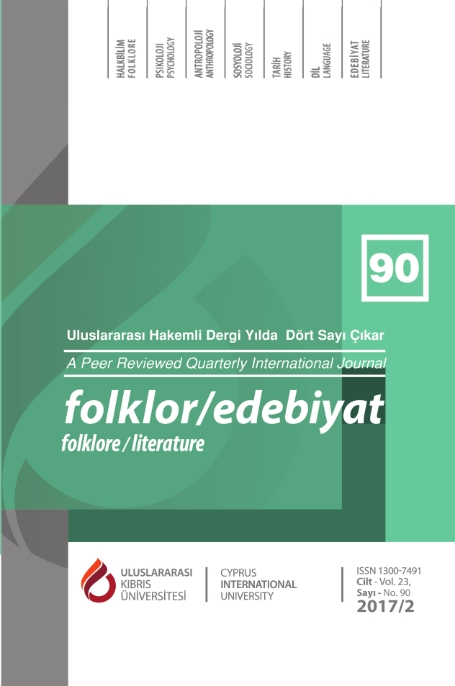Şehriyar’in Bin Bir Masal Gecesi Balinanin Karni Sembolünün Bir Örneği Olarak Masal Diyari
Shahryār’s 1001 Tale Nights The Tale Land as an Example of The Symbol of the Belly of the Whale
Author(s): Seval KasımoğluSubject(s): Cultural history, Studies of Literature, Metaphysics, Oral history, Novel, Philosophy of Mind, Philosophy of Language
Published by: Uluslararası Kıbrıs Üniversitesi
Keywords: 1001 Arabian Nights; belly of the whale; active imagination; daytime thoughts; transitional objects;
Summary/Abstract: The aim of the study is to analyse the story of The Tale of King Shahryār and his Brother King Shah Zaman which forms the framework of 1001 Arabian Nights based upon the belly of the whale in Joseph Campbell’s monomyth theory in his The Hero with a Thousand Faces. Monomyth consists of three main parts, namely setting off, initiation and return. These parts narrate a person confronting his unconscious-self after facing a problem and breaking away from his former boundaries. After successfully going through such a spiritual process, one would almost be reborn by leaving behind old habits, boundaries. Psychoanalytically, these parts stand for the divergence of conscious and unconscious, confrontation with the unconscious and combination of the two ending up with a balanced whole. As fort he belly of the whale, it is the confrontation with the unconscious. The system of Campbell is an extended form of the doctrines of most notably Sigmund Freud and Carl Gustav Jung and also Melanie Klein and Géza Róheim. In this article, Shahryār listening to the tales for a thousand and one nights in the 1001 Arabian Nights will be interpreted in relation with Campbell’s belly of the whale, Jung’s active imagination, Freud’s daytime thoughts, Donald Woods Winnicott’s transitional objects. In addition, the hero/heroine in this case does not perform an effective action, but he listens to tales and matures by the narratives of the characters in the tales. This is an indication that reading monomyth through metaphors as in belly of the whale provides a deeper sense to the story.
Journal: Folklor/Edebiyat
- Issue Year: 23/2017
- Issue No: 90
- Page Range: 61-74
- Page Count: 14
- Language: Turkish

